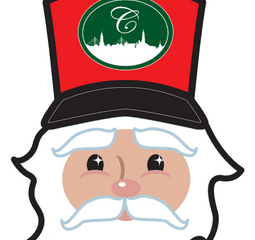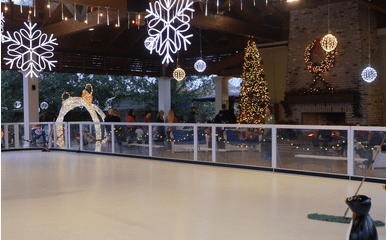Uncategorized
Hemp — More than Meets the Eye
 Introduction
Introduction
For people unfamiliar with the world of cannabis, mistaking hemp for marijuana and vice versa is a rookie mistake. But you don’t need to be a trained specialist to tell them apart. Keen to find out how? Let’s dive into more details about these two “strains” of cannabis.
Breaking Down Hemp
The history of the hemp plant traces its roots way back to 10,000 years ago, where its previous purposes included far more than the medicinal and recreational uses now. Its utility can be split into four different categories: bast fibers, shives, leaves/flowers and lastly, seeds. Materials and nutrients like fiber from its stems, protein from its seeds and oils were extracted to manufacture products like paper, clothing, fabric, rope, and more. The multifunctionality of the hemp plant definitely made it extremely viable and useful all round. Additionally, its overall composition can be used to make fuel and feedstock. You can learn a lot more with Field Queen.
Does Hemp Have THC?
THC, which stands for tetrahydrocannabinol, refers to the addictive, hallucinogenic component cannabinoid that makes consumption of hemp and marijuana highly intoxicating. The only difference in this aspect is that marijuana produces far more THC than hemp does. As a result, the amount of THC released from hemp is not nearly enough to render a consumer truly intoxicated. Nonetheless, this doesn’t disregard the other excellent medicinal properties that hemp is useful for. Hemp is capable of producing large quantities of the non-intoxicating chemical cannabidiol (CBD) to administer therapeutic effects.
Hence, because it’s been established that hemp and marijuana appear similar and it’s hard to tell them apart, it comes as no surprise that many countries actually use THC concentration levels as a measure to distinguish between the two plants. With that being said, each country has its own specific guidelines surrounding the THC concentration limit to classify hemp and marijuana respectively. For example, U.S. officials qualify industrial hemp as containing a maximum of 0.3% THC whereas, in the U.K., they accorded a null concentration value.
Hemp Consumption: Smoking or no?
With such minimal traces of THC found in hemp, the quantities are insufficient to render a person intoxicated. Even if we take CBD into account, this chemical is still a non-intoxicating cannabinoid that is unable to produce any euphoric high. Thus essentially, you can smoke hemp without getting high.
If you truly want to maximize the benefits of hemp, professionals actually recommend you to consume a hemp-derived CBD product like CBD oil or tincture instead. This way, you’ll be able to experience the therapeutic effects of CBD found in hemp, since that’s the chemical most in abundance in the plant.
Purposes of Hemp
Manufacturing products
Depending on the desired final product, manufacturers will tap into different parts of the hemp plant for production. For CBD oil, this is obtained through extraction from hemp leaves and flowers. CBD oil has risen in popularity in recent years due to its budding reputation for treating many kinds of illnesses. As a result, CBD oil seems to be the main focus of CBD cultivation from hemp. What’s more, they are sometimes manufactured as recreational products like the premium hemp flower which is highly popular among consumers.
Moving on, there are three different types of fibers attainable from hemp. Hemp fibers are useful in the production of textiles, papers, and construction materials and products. Alternatively, short woody fibers called shives can be extracted from the stalk of hemp. These shives are then used for the production of bedding materials, absorbents, ceiling panels and even compost. Lastly, bast fiber itself can be split into three categories — primary, secondary and tow. Bast fiber is located on the perimeter of the hemp stalk and it’s known for its cell strength and cell wall thickness. Thus, these properties help determine the strength and durability of the bast fiber in order to decide on its finalized potential.
When it comes to stalk preparation, a multi-step process called decorticating is involved in order to separate the long fibers from the plant. This process is carried out through the following:
a. Retting
Since hemp stalks have a tough exterior all over its surface, they need to undergo retting to break down the hardy epithelial tissues. There are three methods of retting:
- Field retting: Cut and lay out the hemp plants on a field for a duration of four to six weeks. Make sure to turn them over periodically for even sun exposure. This stage facilitates bacterial penetration into the inner stalk, disintegrating the top layer.
- Water retting: Once the stalks are evenly dried out, submerge them underwater for a few days. The water softens the exterior and seeps into the inner layer. This encourages bacterial growth within the inner layers and accelerates the breakdown process.
- Chemical retting: Organic compounds like acids and bases along with special groups of enzymes help to decompose the strong bast fiber walls.
Subsequently, a general rule of thumb for all retting processes is to ensure that the stalks dry up until they are between 10% to 15% in moisture level. Above 15%, bacterial growth will persist and excess, unwanted decomposition will continue. Below 10%, the stalks get overly-dry and might become too fragile and brittle for transport.
b. Decorticating
There are three stages involved in the process:
- Scutching: This refers to squashing the hemp stalks through a stream of rollers to tear apart the fibers. Their woody core is squeezed out and separated from the pliable fibers. Subsequently, perform retting to dry them out.
- Hackling: This extracts short and intermediate fibers from the stalk.
- Twisting: Twist the fibers individually into yarn.
Popular modern decorticating techniques include steam explosion (steaming fibers in a pressurized chamber) and ultrasonic breaking (using ultrasonic waves to break down fibers). These two methods ensure the quality of the fibers and prepare them for immediate use under fabricated cotton and wool-processing machinery.
(c) Baling and Storage
Once extraction is completed, the hemp stalks can be baled up using traditional farming balers for transport and subsequently stored for a long time in dry environments. Large, round balers are generally preferable to square balers because of the minuscule pockets of space between each stalk to facilitate better drying. Regular checks for wet patches to prevent molding is also recommended at this stage.
2. Edibility of Hemp
Contrary to popular belief, yes, it is edible — specifically, its seeds. Hemp seeds are rich in protein, dietary fiber, vitamins and minerals. For a more palatable option, the seeds can be de-shelled. If not directly consumed whole, hemp oil, flour and milk are also produced from the seeds through pressing, grinding and mixing with water respectively.
3. Hemp Cultivation
Since hemp is a dioecious plant with both male and female plants, the gender matters during cultivation. Male plants will blossom much earlier than female plants, but they don’t produce as much fiber. Most hemp fields have a majority population of female plants with a few male plants sprinkled here and there anyway. This arrangement optimizes the pollination process for maximal flowering. Marijuana fields on the other hand, completely omit male plants all together in favor of sinsemilla flower.
Hemp plants can also be planted in close proximity with each other as opposed to marijuana plants that require a four square feet distance apart. The dense arrangement of hemp plants suggests that they can be planted anywhere from 40 to 60 plants or 100 to 120 plants per four square feet depending on the intended final product.
Finally, marijuana plants are typically planted indoors like in greenhouses but hemp plants are almost always planted outdoors despite being equally as vulnerable as marijuana. So what’s the secret behind this? Well, hemp farmers utilize this technique called crop rotation to prevent pest accumulation and let nutrients return to the soil. This method is adopted by farmers where hemp isn’t the primary agricultural product.
Conclusion
In general, hemp seems to offer a wider range of functions and purposes apart from purely medicinal and recreational consumption. Their highly versatile nature might prove useful in the future to be capitalized on as an alternative resource for many products.



























Pingback: How To Recognize A Good Marijuana Dispensary In Pennsylvania? - Anderson Davis